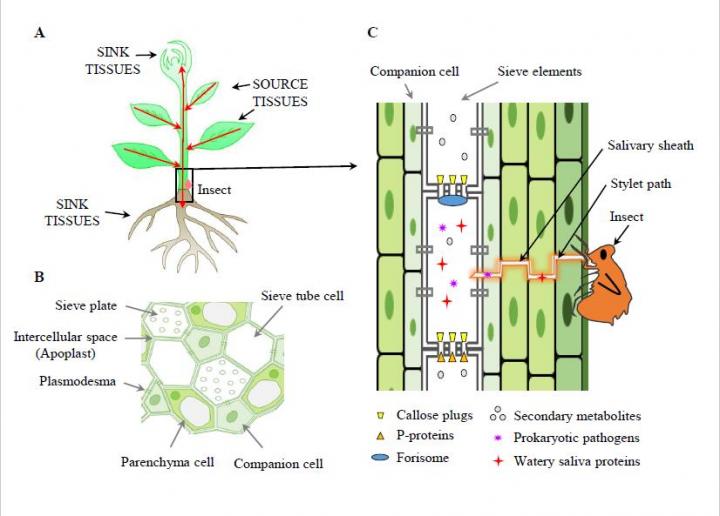
Credit: JIANG Yanjuan
Numerous insects and pathogens extract nutrients from phloem tissue buried deep inside plants. These phloem-feeding insects and pathogens cause tremendous economic losses worldwide and represent some of the most difficult pests to understand due to their specialized feeding strategies. The resulting infestations and diseases are also among the most costly and difficult to manage. However, for historic and technical reasons, our knowledge of phloem-insect/pathogen interactions has been fragmentary.
Now, a new study by researchers from the Xishuangbanna Tropical Botanical Garden (XTBG) and their collaborators brings this knowledge together. In a survey of the relevant scientific literature, the scientists highlight significant advances in the understanding of phloem interactions with insects and prokaryotic pathogens as well as make recommendations for future research. The report was published in the latest issue of PNAS on November 12.
The researchers point out that several studies have focused on identifying the secretomes of phloem-limited insects and pathogens over the past decade. Progress has been made in understanding how some effector proteins of phloem-associated insects facilitate the feeding behavior and performance of insects in plants. However, research to understand how they influence plant and insect physiology is still at an early stage.
The researchers propose that interactions with phloem-feeding insects and pathogens should be considered when studying phloem, since it contains a fascinating collection of unique and interactive cell types.
Unlike phloem-feeding insects, prokaryotes cannot actively enter the phloem; therefore, all known phloem-associated prokaryotes are passively delivered into the phloem by phloem-feeding insects.
Innovative culturing approaches are also required for future research, in order to remove one of the most formidable barriers to the study of phloem-pathogen interactions.
“Most importantly, identifying host genes that underlie plant interactions with phloem-feeding insects and pathogens would be an attractive target for improving host resistance via introgression of naturally occurring variants or genome editing,” said Dr. JIANG Yanjuan, first author of the study.
###
According to the researchers, phloem-insect/pathogen interactions represent an exciting frontier in plant science. “We consider that an influx of new scientific expertise and funding is crucial to achieving faster progress in this important area of research, which is integral to global food security,” said Dr. JIANG.
Media Contact
JIANG Yanjuan
[email protected]
Original Source
http://english.
Related Journal Article
http://dx.




